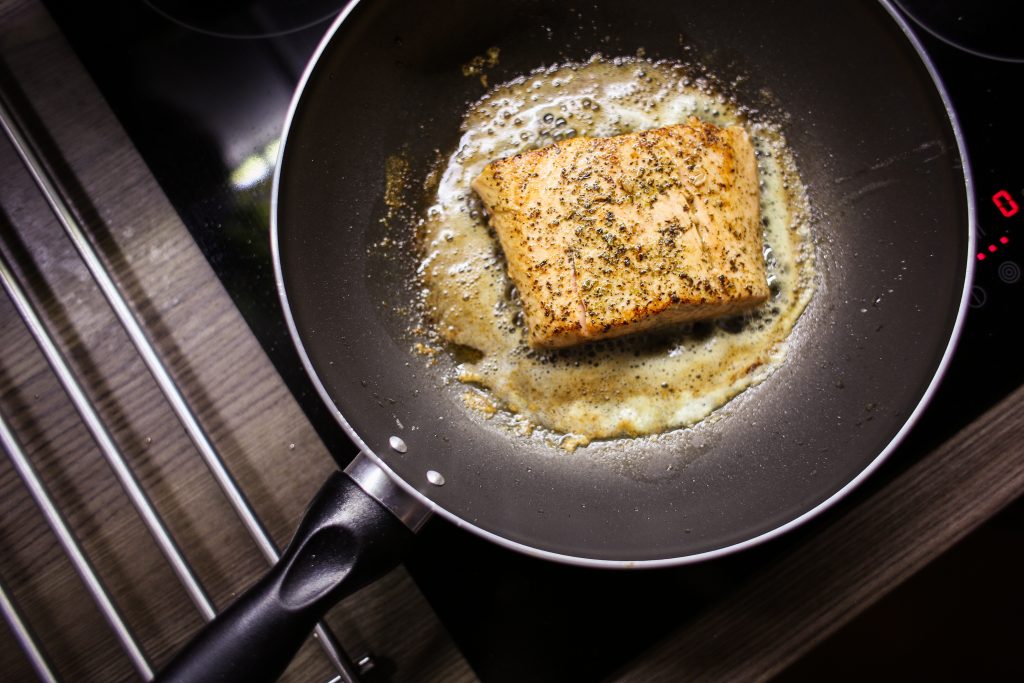In most European countries fish consumption per capita amounts to 20 kgs a year – in Hungary, this number barely breaks 4 kgs. This is a saddening number, since eating fish provides plenty of physiological benefits! We sat down to have a conversation with Ráhel Nyikos, our dietary consultant, who’s helpful pieces of advice you will surely encounter plenty of times reading our blogs.
– Is having fish regularly an important part of a healthy, balanced diet?
Ráhel: Fish consumption is part of a healthy diet. Hungarian dietary guidelines suggest incorporating fish in our diets twice a week. Fish contains many valuable vitamins and minerals, who’s amounts differ depending on the type of fish. So do the nutritional values of the fish.
– What have you experienced during your professional career regarding people’s habits of fish consumption? Do they generally eat enough of it? Too little? Too much maybe….?
Ráhel: Unfortunately, Hungarian gastronomical customs do not include significant traditions regarding fish consumption like they do in mediterranean areas, for example, where sea-fish-based dishes are consumed on a daily basis. Here, in Hungary, people have fish once a month on average. This number grows in the summer, but even then it’s mainly fish caught from Lake Balaton.
Each type of fish contains different nutrients. What type of fish do you recommend to those who are on a diet? Which type has the least amount of fat? have
Ráhel: If one would like to lose a couple of kgs, they should go for a fish that has a lower fat-content. Of the fish native to Hungary some of the ones with less fat are the carp (1.9 g/100 g), the zander (0.8 g/100 g), the catfish (0.8 g/100 g), the chub (0.8 g/100 g) or the trout (2.9 g/100 g).
Amongst sea-fish, some with lower fat-content are the hake (0.9 g/100 g), the tuna (4.9 g/100 g) and lowest of all is the cod (0.5 g /100 g). An alternative solution could be the clam, which can also be a splendid addition to a weight-loss diet. If one were to opt for canned fish while on a diet, they should go for the ones packed in water, instead of those packed in oil. They should also choose a way to prepare their choice of fish that only requires little grease. Instead of deep-frying the fish for example, it could be steamed, fried in a little grease in a ceramic dish, or cooked in a fan oven on a silicone baking mat.

Is there a type of fish that is particularly healthy? One that you would even recommend to people who are sick (e. g. someone with heart disease)?
Ráhel: The healthiest ones are definitely sea-fish. While most of our native, Hungarian fish are high in fat and saturated fatty acids, while sea-fish are rich in polyunsaturated omega-3 fatty acids, and are higher in proteins. Omega-3 (DHA, EPA) is an essential fatty acid, and is integral to our bodies, fulfilling many a function.
While saturated fatty acids may deal damage to artery walls, unsaturated fatty acids promote their perpetuance of elasticity, and inhibit the forming of fatty deposits, plaques in them. Because of these same traits, sea-fish are quintessential to the dietotherapy of cardiovascular diseases. People with diabetes also greatly benefit from eating sea-fish, since they also are subject to higher cardiovascular risk. It’s also extremely important for people with high levels of fat in their blood, who are on a low-cholesterol diet, to be eating sea-fish as many times as possible, since those can increase the „good cholesterol” (HDL)-levels. Omega-3 fatty acids can also inhibit the formation of inflammatory mediators. Because of this, people with chronic inflammatory diseases are also encouraged to eat hake, cod or salmon. Omega-3 also plays an integral part in the mental maturation of children, that’s why it’s important to add sea-fish to the sandwiches of our kids as soon as possible, even if in the form of fish-paste. Preventing Alzheimer’s disease, and maintaining mental viridity is also amongst areas Omega-3 fatty acids can be useful for.
